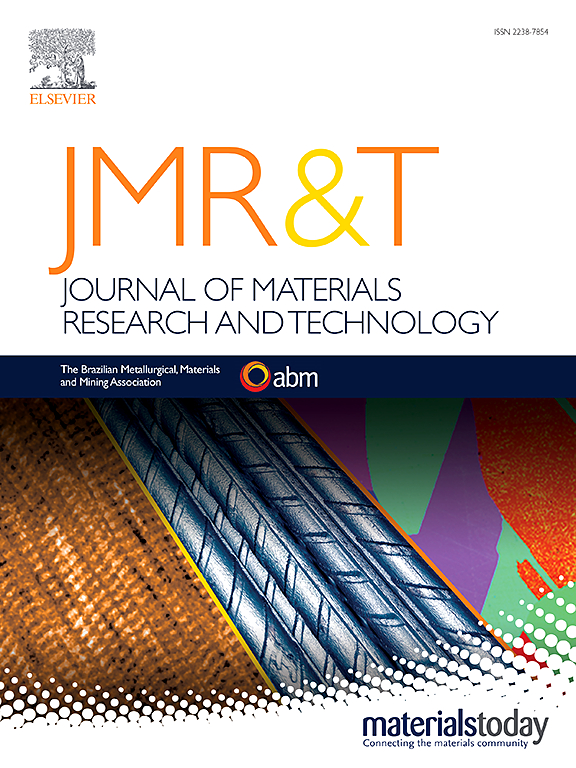Machine learning-driven analysis of erosion resistance in ZrSiO4/Al2O3 reinforced A356 hybrid composites: Integration of CART algorithm with Taguchi optimization
IF 6.2
2区 材料科学
Q1 MATERIALS SCIENCE, MULTIDISCIPLINARY
Journal of Materials Research and Technology-Jmr&t
Pub Date : 2025-03-12
DOI:10.1016/j.jmrt.2025.03.107
引用次数: 0
Abstract
Aluminum alloy A356 has been increasingly important in the production of aircraft wings and fuselage skins in recent years, primarily because of its lightweight nature and specialized strength characteristics. This study aims to produce and investigate the erosion resistance of A356 hybrid composites by incorporating reinforcements such as zirconium silicate (ZrSiO4) and aluminium oxide (Al2O3) using the Stir Casting Process (SCP) technology. Microhardness tests were performed on different combinations of dual reinforcement to evaluate the erosion resistance of the specimen with the highest microhardness value. The erosion performance of this rigid sample is quantified under parameters such as jet angle, jet pressure, jet distance, mesh number of erodent and impinging duration. These parameters were optimized using the Taguchi technique, and their contributions were analyzed using ANOVA. Additionally, CART regression analysis was employed to predict the erosion rates and evaluate the relative importance of erosion parameters. Confirmation tests conducted on optimized parameters validated both models, with the regression model showing superior accuracy (average error 0.34 %) compared to the CART model (average error 1.18 %). CART results highlight the jet angle and erodent mesh number as the most significant predictors of erosion rate, with jet angle contributing 100 % and mesh number contributing 24.2 % to model performance. Surface morphology analysis revealed less deterioration in terms of grain refinement and uniform reinforcement particle distribution compared to the base A356 matrix.
求助全文
约1分钟内获得全文
求助全文
来源期刊

Journal of Materials Research and Technology-Jmr&t
Materials Science-Metals and Alloys
CiteScore
8.80
自引率
9.40%
发文量
1877
审稿时长
35 days
期刊介绍:
The Journal of Materials Research and Technology is a publication of ABM - Brazilian Metallurgical, Materials and Mining Association - and publishes four issues per year also with a free version online (www.jmrt.com.br). The journal provides an international medium for the publication of theoretical and experimental studies related to Metallurgy, Materials and Minerals research and technology. Appropriate submissions to the Journal of Materials Research and Technology should include scientific and/or engineering factors which affect processes and products in the Metallurgy, Materials and Mining areas.
 求助内容:
求助内容: 应助结果提醒方式:
应助结果提醒方式:


